

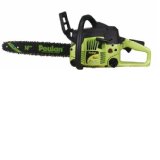
Search This Site
Search With Google
Moisture Meter For Bonsai Trees
The Rapitest light and moisture meter is a meter that measures moisture content levels and sunlight levels.The biggest challenge for any bonsai grower is ensuring that they get the watering right with their bonsai trees. This is why having a bonsai moisture meter is so important. Another challenge to the bonsai grower is ensuring that their bonsai tree receives the necessary light for it to flourish and thrive. This is particularly so for bonsai trees that are kept indoors. The solution here is to have a moisture and light meter to carry out your checks.
The Rapitest light and moisture meter is a perfect solution for the above 2 challenges. It is a meter that gives instant results on its analogue display in a graduated scale. It can also be used with other plants that you have and outside for the garden as well. The single probe which is attached to the meter by a flexible cord gives you the flexibility to test many plants in a variety of situations. It also can help you with hanging plants.
Bonsai Moisture Meter
History Of The Bonsai Tree
Han Period
The first evidence of bonsai growing goes back as far as between 206 BC and 220 AD in China under the rule of Han period of dynastic rule. Legend says that Fei Jiang Feng had magic powers and could shrink the earth. He could make mountains, rivers, animals, homes and even people dwarf in size and be put inside an urn. Though this is just a myth concerning mountains, rivers and human beings it is believed that he was a bonsai grower who grew minute trees and hence was capable on bringing landscapes in to the home.
T’sin Period
First literary evidence of bonsai growing comes in the T’sin dynasty between 265 and 420 and continues to show up in writings to the Tang dynasty of 618 to 906. There were even the first pictorial evidence or records in this period as well and show the art of bonsai growing being appreciated by the Imperial court.
Chinese archaeologists uncovered an ancient tomb in 1972 which was built in 706 AD. It was the resting place of Prince Zhang Huai from the Tang dynasty. Murals on the walls depicted royal servants holding potted bonsai trees and mini rockeries.
Bonsai growing is generally believed to have reached Japan abut a 1000 years ago but the earliest records depict it was at the beginning of the 13th century that bonsai growing was enjoyed in Japan. These records come in the form of schrolls which show the great and miraculous power of prayer.
The 15th century in Japan is known as the Nuromachi period. Evidence of bonsai trees
can be found in the famous play by Noh called Hachi-
Appreciating Bonsai Trees
It is fair to say that to become involved in the art of bonsai growing and fully appreciate it one must have an appreciation of the tree. Early bonsai growing did not fully understand the shape of the tree. In the Western world tree shapes tend to be judged on the mature shape of the head of the tree. For example a tree can be classified as a dense round head tree, or half rounded head tree. Other descriptions can include spreading branches and erect main branches. However one important factor with regards to the bonsai tree is the actual shape of the trunk. It is only Japan that actually classifies it’s trees by the shape of their trunk which is quite unusual because any bonsai tree shape is based upon it’s trunk. The trunk of the bonsai tree is all important.
If you are considering starting bonsai gardening it is well worth the effort and time to go and visit a botanical garden and observe fully mature bonsai trees. You will see that many are different and have different characteristics. You need to study the trunk of each particular bonsai tree, the colour and texture of the bark of the bonsai tree and then the arrangement of the branches of the bonsai tree. All these characteristics are the basis on which your particular bonsai tree will be based. The roots of the bonsai tree should also be examined closely as well.
What we are saying here is that when you grow a bonsai tree you need to place importance of certain parts of the bonsai tree in a specific order. This order is first the trunk, then the branches and finally the roots of the bonsai tree. If you follow this order of importance then you will eventually have yourself a thriving and very splendid bonsai tree.
The characteristics that you want from your bonsai tree are:
Trunk
The trunk of your bonsai tree needs to be scar free and without any imperfections on it at all. You want the trunk to taper in a natural form from it’s base all the way to the top. Any bonsai tree that has been pruned in a dramatic manner in an attempt to reduce it’s height significantly will not have a trunk that is scar free and imperfection free.
Branches
The framework of any splendid bonsai tree are the branches. These branches should leave the trunk in an alternative way. By this we mean that the branches should leave the trunk first from one side and then another side of the trunk at a higher point. So the pruning of these branches in a particular style is what will define your bonsai tree.
Now bonsai tree experts differ in opinion with regards to the branches of a bonsai tree. In one corner there are those experts who believe that bonsai branches should be natural and never tied down. Without tying down the branches will grow freely and naturally. The other side of opinion says that the branches need to be tied and pinned in order to create a perfect harmony between the trunk and branches of the bonsai tree.
Leaves
Many people decide on which particular bonsai tree to grow by it’s leaves. The shape, colour and texture of the leaves are the deciding influence. There are varieties of different colours, shapes and sizes to be considered. Your choice can be for personal preference reasons or for situational reasons where you wish your bonsai tree to fit and blend in with it’s surroundings. However you do need to study the leaf aspect of the bonsai tree carefully. Certain bonsai trees will have leaves which will reduce their sizes naturally to fit in proportion with the trunk. Other bonsai trees will still continue to grow large leaves which just does not look right on a bonsai tree in certain situations.
Roots
For a superb bonsai tree you need to have an attractive root system when the roots are above soil level. You want roots on your bonsai tree with a good natural radiating pattern. Then need to give the appearance, whether true or not, of having a good solid grip on the soil. Appearance wise they also need to look as if they are mature roots and replicate those of old trees in natural landscapes. The thing with roots on a bonsai tree is that if they have defects on them they are very hard to “repair” or improve. So particular attention must be given to bonsai roots when the bonsai tree is young. Early training and arranging of the root system is vital.
When you check out the definition of bonsai in the Collins English Dictionary the description you get is “The art of growing dwarfed ornamental varieties of trees or shrubs in small shallow pots by selective pruning”. And additionally “A tree or shrub grown by this method”
There is quite a history behind bonsai growing. The word bonsai is made up of two syllables which mean “tray” and “pot”. Now when you say bonsai out aloud it has a Japanese sounding ring to it, but the characteristics of the word are Chinese. This is appropriate as bonsai growing actually originated in China, but it was the Japanese who refined the art of bonsai gardening and introduced bonsai growing to the Western World.
Bonsai growing is a passion of mine, if not an obsession, and in my opinion is the most exciting form of horticulture. Where else can you take something like a giant tree and reduce it in proportions so small that it can be held in the palm of your hand. Replicating giant trees on a small scale has been refined over hundreds of years by very skilful and patient horticultural methods. To such an extent that the bonsai tree can be designed and cared for in a shallow container with no more than a spoonful of soil in certain cases.
Moisture Meter Guide 2010 Contact details:garnett65@hotmail.com
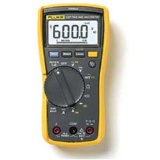

The complete moisture meter website
Moisture Meter Guide
Features
Instant results for watering needs
Tells you how much light your plants receive
Includes needs for 150 plants
No batteries
Accurate and inexpensive
Boat Moisture Meter
A moisture meter proves itself to be a useful tool when testing the moisture content levels of boat materials. When assessing a boat, care, judgement and experience should all be employed and then the moisture meter used as the last tool to give the final assessment. Moisture meter for boats
Need A Chainsaw For Firewood?
The petrol chainsaw is used to fell trees, as well as for pruning and cutting overgrowth. Tree surgeons favour the petrol chainsaw and use it for cutting away branches and foliage. For chopping firewood
Orchid Moisture Meter
The orchid belongs to a widespread and very diverse family of flowering plants which have fragrant and colourful blooms. Orchids can be found in pretty much every habitat. Growing orchids
Caravan Moisture Meter
Any caravan that is kept open to the elements all year round can become very susceptible to damp and damp related problems if proper precautions are not taken to prevent this. Caravan moisture testing

Garden Moisture Meter
The garden moisture meter helps any avid gardener to measure and monitor many different conditions to ensure that they can maintain healthy growing conditions for both indoor as well as outdoor plants. In order to have healthy thriving plants Soil moisture testing



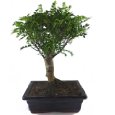


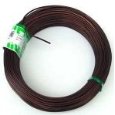
Bonsai Tree Training

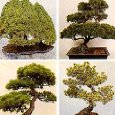
Bonsai Plants
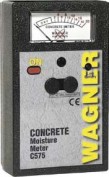
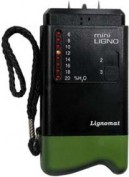
| Tramex Moisture Encounter Plus |
| Tramex Compact Wood Moisture Meter |
| Tramex Concrete Encounter Moisture Meter |
| Tramex Skipper Plus Moisture Meter |
| Tramex Roof And Wall Moisture Scanner |
| Sonin Digital Moisture Meter model 50218 |
| Sonin Digital Moisture Meter 270 model 50270 |
| Sonin Moisture Test Tool model 50210 |
| Sonin Moisture Test Meter Model 50211 |
| Oak |
| Douglas Fir |
| Beech Tree |
| Elm Tree |
| Hickory Tree |
| Maple Tree |
| Pine Tree |
| Prevent And Repair Gaps In Wooden Floorboards |
| How To Fix A Squeaky Hardwood Floor |
| How To Repair A Hardwood Floor That Has Buckled |
| Which Is The Best Firewood? |
| Concrete |
| Concrete Moisture |
| Screed Moisture Meter |
| SDS Drill |
| Belle Cement Mixer |
| SDS Drill Advice |
| Which SDS Drill |
| SDS Drill Accessories |
| Drilling Into Concrete |
| Kennedy Tool Box |
| Moisture - Basic Facts |
| Types Of Damp |
| Wet Rot |
| Dry Rot |
| Mold |
| Water Leak Detection |
| Stucco Moisture |
| Water Damage |
| Moisture And Rust |
| Moisture Damage To A Chimney |
| Wallpaper Stripper |
| Plaster Mixer |
| Why Worry About Moisture Problems |
| Does Your Home Have A Moisture Problem? |
| How To Solve Moisture Problems |
| How To Use Anti Mold Paint |
| Rising Damp |
| Condensation |
| Salt Damp |
| How To Avoid Bathroom Condensation |
| How To Remove Black Mold |
| How To Prevent Bathroom Mold |
| Soldering Kit |
| Soldering Kit Contents |
| Soldering Kit Advice |
| Bonsai Tree Classification |
| Growing Bonsai From Seed |
| Bonsai Tree Care |
| Bonsai Tree Training |
| Bonsai Tools |
| Displaying Bonsai |
| Bonsai Calendar |
| Bonsai Plants |
| The Thirsty Light Curve Moisture Meter |
| The Thirsty Light Ladybird Moisture Meter |
| The Thirsty Light Bumble Bee Moisture Meter |
| The Thirsty Light Butterfly Moisture Meter |
| Hanna Instruments |
| Agratronix Portable Coffee Moisture Tester |
| Lawn Aerator |
| Lawn Roller |
| Lawn Rake |
| Lawn Sand |
| Chainshot |
| Chainsaw Gloves |
| Chainsaw Trousers |
| Chainsaw Boots |
| Mac 4 - 20 XT Chainsaw |
| Mac 738 Chainsaw |
| Mac 842 Chainsaw |
| Mac 20X Power Chainsaw |
| Einhell BG-PC 3735 Chainsaw |
| Einhell BG-PC 4040 Chainsaw |
| Einhell BG-PC 5045 Chainsaw |
| Poulan P3314 Chainsaw |
| Poulan P4018 Chainsaw |
| Poulan Pro PP3816AV Chainsaw |
| Poulan Pro PP4218AVX Chainsaw |
| Poulan Pro PP4620AVX Chainsaw |
| Efco MT 4100 SP Chainsaw |
| Efco MT 3500 Chainsaw |
| Efco 132 S Chainsaw |
| Efco 147 Chainsaw |
| Efco 152 Chainsaw |
| Efco MT 7200 Chainsaw |
| Efco MT 8200 Chainsaw |
| Efco MT 3750 Chainsaw |
| Methods Of Obtaining Soil Moisture Levels |
| Hygrometer |
| Psychrometer |
| Rain Gauge |
| Wave Ventilation System |
| Humidity |
| Hygrometer For Keeping Reptiles |
| Humidor |
| Weather Stations |
| Musical Instrument Storage |